Everything About Mobile And Immobile Plant Nutrients
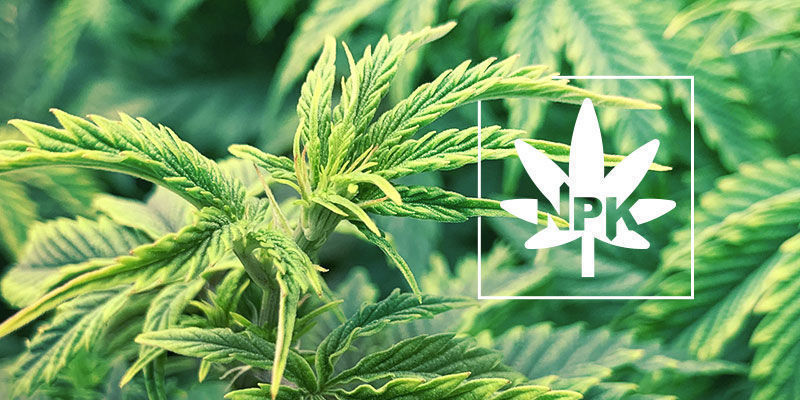
Properly identifying nutrient deficiencies in cannabis can be tricky, especially for beginner growers. Understanding the difference between mobile and immobile plant nutrients, however, can help you hone in on nutrient deficiencies and treat them faster to minimise their impact on your plant's health and growth.
Nutrient mobility is a key aspect of plant nutrition that's often overshadowed by more basic information about NPK formulas and fertilisation. Understanding how plants move nutrients around their organism, however, can come in super handy when it comes to diagnosing plant health, nutrient deficiencies, and more.
Keep reading for a solid overview of mobile vs immobile plant nutrients, how nutrient mobility is expressed in cannabis plants, and some tips on how to address nutrient deficiencies when they strike.
Mobile vs. immobile plant nutrients
The difference between mobile and immobile plant nutrients is quite simple; once they've been assimilated by a plant, mobile nutrients can be translocated to other parts of the plant's organism, while immobile nutrients cannot. In that sense, plants are able to use assimilated mobile nutrients in ways that most favour their growth, such as to address a nutrient deficiency in younger foliage by using nutrients stored in older leaves, for example. Immobile nutrients, on the other hand, cannot move around once assimilated into a plant, and usually remain in the areas of the plant where they were initially stored.
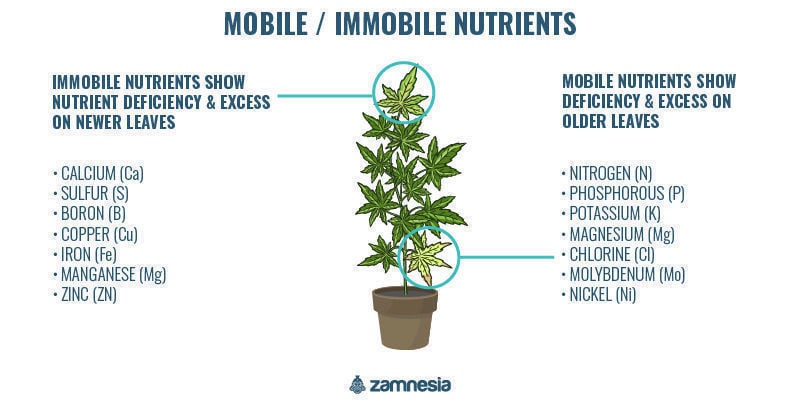
What are mobile plant nutrients?
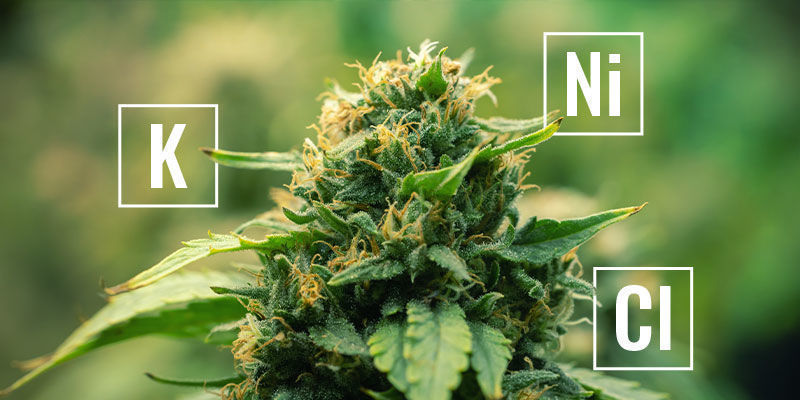
Once assimilated by a plant, nutrients are typically stored in the areas where they are most needed (usually in or near points of new growth). As a plant grows, it can transport stored mobile nutrients around its organism to the areas they are most needed: for example, if a plant needs more nitrogen to develop young, healthy leaves, it can use nitrogen stored in older foliage to fuel this growth.
The primary, secondary, and micronutrients classified as "mobile" are:
- Nitrogen (N)
- Phosphorus (P)
- Potassium (K)
- Magnesium (Mg)
- Chlorine (Cl)
- Molybdenum (Mo)
- Nickel (Ni)
While all of the above nutrients serve different individual purposes, they do share some commonalities. In general, the aforementioned mobile plant nutrients:
- Will move towards areas where there is active plant growth
- Can move in all directions
- Are transported via the 2 main vascular plant tissues (the xylem and phloem)
- Can be effectively administered with both soil and foliar fertilisation (except nitrogen, which is best applied to the soil)
What are immobile plant nutrients?
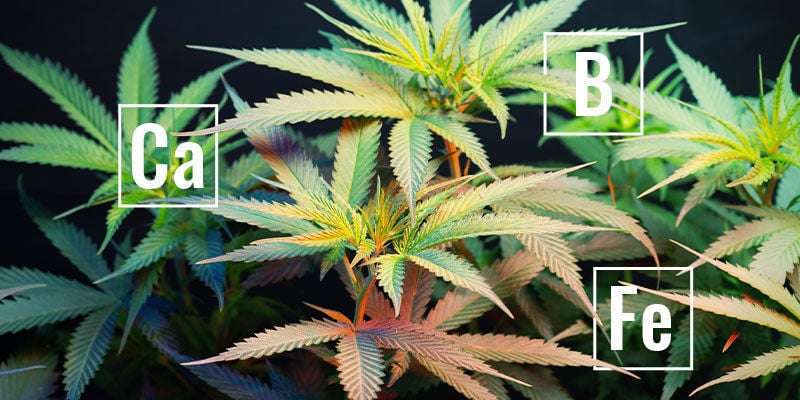
Unlike mobile nutrients, immobile nutrients cannot be relocated within a plant's organism and typically stay in the areas of the plant where they were stored. If a plant suffers from a deficiency of immobile nutrients, it will typically develop symptoms of this deficiency in areas of new growth. In most cases, nutrient deficiencies take time to develop into symptoms, especially if the lacking nutrient is immobile and the affected plant is growing slowly.
The nutrients classified as "immobile" include:
Unlike mobile nutrients, immobile nutrients are only transported via the xylem. Because they cannot be redistributed within a plant, they do not move to areas of new growth. A deficiency of one of the immobile nutrients listed above will usually manifest as symptoms in new foliage first and only affect older foliage if left untreated. Immobile nutrient deficiencies typically don't respond well to foliar fertilisation and are best treated with soil-based fertilisers, where they can be absorbed via the roots and transported directly via the xylem to the areas they are needed most.
How nutrient mobility is expressed in cannabis plants
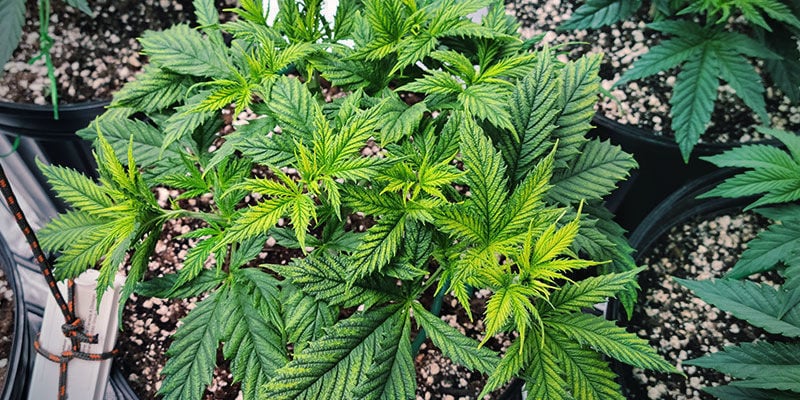
Correctly identifying nutrient deficiencies can be tricky. The differences between deficiencies can be subtle and hard to tell apart, especially for beginner growers. Moreover, nutrient deficiencies can have many different causes besides simply a lack of nutrients in a plant's growing medium, including pH issues, over or underwatering, temperature problems, and more.
If your cannabis plant shows signs of a nutrient deficiency, pay close attention to where the deficiency manifests itself. Mobile nutrient deficiencies will manifest in older foliage near the bottom of the plant (nitrogen deficiency is a clear example, which causes yellowing leaves near the bottom of the plant that typically progresses upwards if left untreated). However, immobile nutrient deficiencies will manifest symptoms in younger leaves near the top of your plant and only progress further down the plant if left untreated for long periods.
How to fix mobile & immobile nutrient deficiencies
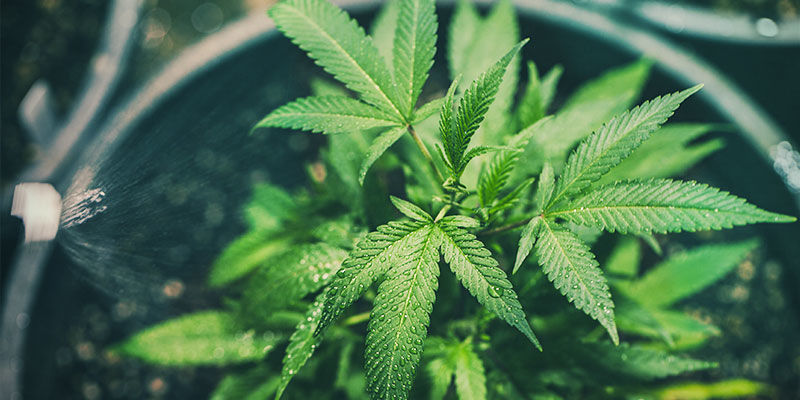
Addressing mobile and immobile nutrient deficiencies can be as simple as administering the lacking nutrients to your plant's medium in a controlled manner. Don't get tempted by the idea of saturating a plant with the nutrients it's lacking; instead, gently up your dose of the lacking nutrients or gradually switch to a more adequate fertiliser to avoid overfeeding, or worse, causing a salt buildup and complete nutrient lockout. In the case of mobile nutrient deficiencies, consider using foliar fertilisation to address the deficiency more quickly (though this generally won't work to address nitrogen deficiencies, as the affected plant will likely need more nitrogen than you can administer with a foliar spray).
Also, whenever you face a nutrient deficiency, we recommend a general check-up on all major aspects of your grow. As we mentioned earlier, nutrient deficiencies can often have complex underlying causes such as pH issues, salt buildup, over/underwatering, and temperature/humidity problems. If your plants show signs of a nutrient deficiency, use this opportunity to check the pH and ppm of your soil and nutrient solution, your watering habits, and the overall temperature and humidity of your grow space/garden.
Mobile vs. immobile nutrients: Knowing the difference is key when addressing nutrient solutions
Understanding the difference between mobile and immobile cannabis nutrients isn't rocket science. However, it can come in very handy when facing a nutrient deficiency by helping you identify the nutrients your plants are lacking nutrients more accurately and allowing you to address the deficiency more effectively.





 United States
United States










